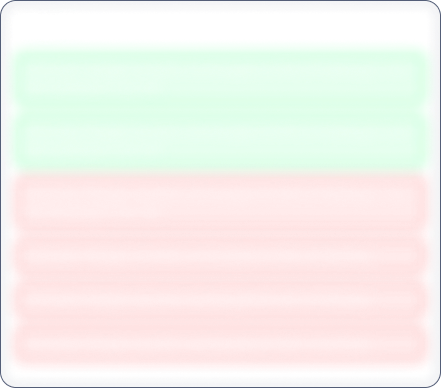Year End Sale 50% off
Renol Polychem

No Data Available
Investor Sentiment
Renol Polychem Share price and Fundamental Analysis
Key Metrics
Stock Returns
Stock Heatmap

No Stocks
Smart Score

Unlock Smart Score
See Detailed Analysis & Insights


Unlock Insights
See Detailed Analysis & Insights
Technicals
Returns Calculator
If you would have investedResearch Report
No Research Report
Corporate Action

No Data Available
Financials
Key Ratios
ROE
Avg ROE (3 Yrs) : NaN%
ROCE
Avg ROCE (3 Yrs) : NaN%
ROA
Avg ROA (3 Yrs) : NaN%
NPM
Avg NPM (3 Yrs) : NaN%
Dividend History
5 Year FactSheet
Documents

No Data Available
News
Renol Polychem Management and History
Company Management


Unlock Management Data
See Detailed Analysis & Insights
Company History
Renol Polychem Limited started its operations way back in year 2008 in the name and style of M/s Renol Enterprise, a Partnership Firm and further commenced its operations as a Private Company under the name and style of Renol Polychem Private Limited, since January 09, 2024 with the Registrar of Companies, Ahmedabad. Subsequently, the Company name changed from 'Renol Polychem Private Limited' to 'Renol Polychem Limited' and a Certificate of Incorporation upon the conversion of Company to Public Limited dated June 19, 2024 was issued by the Registrar of Companies, Central Registration Centre.
Renol Polychem is a leading chemical company in Rajkot that has continuously achieved growth through relentless challenges and innovation since its establishment in 2008 providing pioneering solutions to help produce UPVC, & CPVC pipes, Pipe fittings and manufacturing plastic products. The material is an all-in-one additive containing stabilisers, internal & external lubricants, impact modifier, color pigments & additional essential chemicals or additives.
The Company started manufacturing facility at Rajkot in 2008. It specialize in customized master batch quantities to suit the specific requirements of customers. The manufacturing facilities located at Shed Kothariya in Rajkot Gujarat are spread over 4500 Sq. Ft. of area are equipped to carry out end to end manufacturing activities starting from color mixing to production of finished goods. This has a wide range of products which helps in manufacturing various products like UPVC, CPVC, WPC, plastic products.
The Company is planning an IPO of issuing upto 24,54,000 Equity Shares through Fresh Issue.
Renol Polychem Share Price
Renol Polychem share price reflects investor sentiment toward the company and is impacted by various factors such as financial performance, market trends, and economic conditions. Share price is an indicator which shows the current value of the company's shares at which buyers or sellers can transact.
Renol Polychem Market Cap
Market capitalization of Renol Polychem indicates the total value of its outstanding shares. Marketcap is calculated by multiplying share price and outstanding shares of the company. It is a helpful metric for assessing the company's size and market Valuation. It also helps investors understand how Renol Polychem is valued compared to its competitors.
Renol Polychem PE Ratio
Renol Polychem PE ratio helps investors understand what is the market value of each stock compared to Renol Polychem 's earnings. A PE ratio higher than the average industry PE could indicate an overvaluation of the stock, whereas a lower PE compared to the average industry PE could indicate an undervaluation.
Renol Polychem PEG Ratio
The PEG ratio of Renol Polychem evaluates its PE ratio in relation to its growth rate. A PEG ratio of 1 indicates a fair value, a PEG ratio of less than 1 indicates undervaluation, and a PEG ratio of more than 1 indicates overvaluation.
Renol Polychem ROE (Return on Equity)
Return on Equity (ROE) measures how effectively Renol Polychem generates profit from shareholders' equity. A higher ROE of more than 20% indicates better financial performance in terms of profitability.
Renol Polychem ROCE (Return on Capital Employed)
Return on Capital Employed (ROCE) evaluates the profitability of Renol Polychem in relation to its capital employed. In simple terms, ROCE provides insight to investors as to how well the company is utilizing the capital deployed. A high ROCE of more than 20% shows that the business is making profitable use of its capital.
Renol Polychem Total Debt
Total debt of Renol Polychem shows how much the company owes to either banks or individual creditors. In simple terms, this is the amount the company has to repay. Total debt can be a very useful metric to show the financial health of the company. Total debt more than equity is considered to be a bad sign.
Renol Polychem Debt to Equity Ratio
The Debt-to-Equity (DE) ratio of Renol Polychem compares its total debt to shareholders' equity. A higher Debt to Equity ratio could indicate higher financial risk, while a lower ratio suggests that the company is managing its debt efficiently.
Renol Polychem CAGR (Compound Annual Growth Rate)
CAGR shows the consistent growth rate of Renol Polychem over a specific period, whether it is over a month, a year, or 10 years. It is a key metric to evaluate the company’s long-term growth potential. Main metrics for which CAGR is calculated are net sales, net profit, operating profit, and stock returns.
Renol Polychem Technical Analysis
Technical analysis of Renol Polychem helps investors get an insight into when they can enter or exit the stock. Key components of Renol Polychem Technical Analysis include:
Support Levels (S1, S2, S3)
There are usually multiple support levels, but the main support levels for a stock are S1, S2, S3. Support levels indicate price points where stock might get support from buyers, helping the stock stop falling and rise.
Resistance Levels (R1, R2, R3)
There are usually multiple resistance levels, but the main resistance levels for a stock are R1, R2, R3. Resistance levels represent price points where Renol Polychem shares often struggle to rise above due to selling pressure.
Renol Polychem Dividends
Dividends refer to the portion of the company’s profits distributed to its shareholders. Dividends are typically paid out in cash and reflect Renol Polychem ’s financial health and profitability.
Renol Polychem Bonus Shares
Bonus shares are usually given by companies to make the stock more affordable, increase liquidity, boost investor confidence, and more.
Renol Polychem Stock Split
Stock split increases the number of its outstanding shares by dividing each existing share into multiple shares. When the company offers a stock split, the face value of the stock reduces in the same proportion as the split ratio.
Renol Polychem Financials
The financials of Renol Polychem provide a complete view to investors about its net sales, net profit, operating profits, expenses, and overall financial health. Investors can analyze financial data to assess the company’s stability and also understand how the company has been growing financially.
Renol Polychem Profit and Loss Statements
The profit and loss statement of Renol Polychem highlights its net sales, net profit, total expenditure, and operating profits in the current financial year. This Profit and Loss statement is crucial for evaluating the profitability and financial stability of Renol Polychem .
Renol Polychem Balance Sheet
The balance sheet presents a snapshot of Renol Polychem ’s assets, liabilities, and equity of shareholders, providing insights into the financials of the company.
Renol Polychem Cashflow Statements
Cashflow statements track the company's cash inflows and outflows over a period. It is an essential tool for understanding how well the company manages its liquidity and finances.


